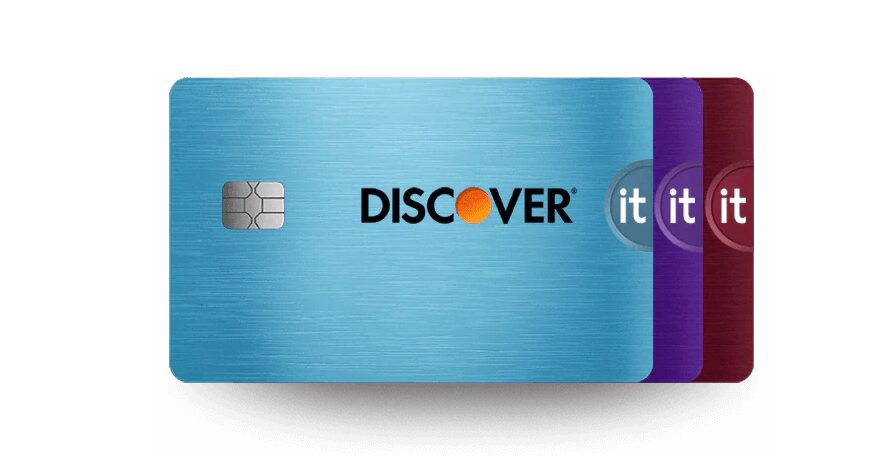How to Use Technology to Control Spending and Personal Finances in the USA

Transforming Financial Management through Digital Tools
In recent years, the importance of managing personal finances has gained prominence, particularly as individuals increasingly navigate a world where expenses can quickly spiral out of control. The digital landscape has equipped consumers with a plethora of tools and applications designed to enhance financial oversight. This not only empowers individuals to take charge of their finances but also simplifies complex processes such as budgeting, tracking expenses, and planning for future investments.
Advantages of Embracing Technology
Real-time tracking: One of the most significant advantages of technology in finance is the ability to monitor daily expenses and income in real-time. For instance, users can utilize mobile applications like Mint or YNAB (You Need A Budget) to link bank accounts and credit cards, allowing for automatic updates on spending patterns. By accessing these applications from their smartphones, users can receive immediate notifications whenever a transaction occurs, promoting a more instant awareness of their financial situation.
Budgeting tools: Another noteworthy benefit is the availability of advanced budgeting tools that facilitate the creation and management of budgets aligned with financial goals. Users can categorize their expenditures into fixed, variable, and discretionary categories, making it easier to identify areas where they can cut back. For example, programs like EveryDollar or Personal Capital enable users to set monthly budgets and track their adherence to these limits, creating accountability and encouraging discipline in spending.
Automated savings: Automated savings features in many applications allow individuals to set aside money effortlessly through scheduled transfers. Apps like Qapital or Acorns enable users to round up their purchases to the nearest dollar and invest the spare change automatically. This feature is especially beneficial for those who struggle with saving, as it removes the procrastination often associated with manual savings efforts.
Fostering Financial Awareness
More critically, the adoption of technology in personal finance management fosters informed decision-making. Users gain insights into their spending habits, enabling them to analyze and adjust their financial strategies effectively. A recent survey indicated that about 70% of Americans have adopted mobile apps for budgeting and financial tracking, indicating a robust shift toward these user-friendly digital solutions. This trend reflects a growing acknowledgment of the necessity for greater financial literacy and responsibility among consumers.
Furthermore, technology serves as a resource-rich landscape for enhancing financial knowledge. Online platforms frequently offer educational content such as articles, tutorials, and webinars on topics ranging from investing to retirement planning. By integrating these tools and resources into daily life, individuals not only streamline their financial practices but also develop a profound understanding of managing their finances, ultimately striving towards long-term financial stability.
Leveraging Financial Apps for Effective Spending Management
In an era dominated by digital innovation, utilizing financial applications can significantly enhance the management of personal finances. These tools not only provide a simple interface for tracking and controlling spending but can also serve as a comprehensive dashboard for overall financial health. By capitalizing on these technological advancements, individuals in the USA can adopt a proactive approach to their financial well-being.
Identifying Spending Patterns
One of the core benefits of financial technology is its ability to analyze spending patterns. Through apps such as Mint and Personal Capital, users can categorize their expenses automatically, allowing them to visualize where their money is going. This categorization helps in identifying spending habits that may be detrimental to financial goals. Users can break down their spending into various categories such as:
- Essentials: Housing, groceries, and utilities.
- Discretionary: Dining out, entertainment, and shopping.
- Savings and Investments: Contributions to retirement accounts and investment portfolios.
By analyzing this data, users can make informed adjustments to their budgets, helping to ensure that their financial activities are aligned with their long-term objectives.
Goal Setting and Tracking Progress
Technology also provides a robust framework for setting financial goals and monitoring progress towards them. Many financial management applications feature goal-setting functionalities, enabling users to establish specific targets, whether it is saving for a vacation, paying off debt, or preparing for retirement. For instance, a user can set a goal to save $5,000 within a year. The application can then break this amount down into monthly savings targets and provide reminders to help stay on track.
Moreover, these apps often provide visual representations of progress, making it easier to stay motivated. Users can see how far they have come toward their savings goals, fostering a sense of accomplishment and encouraging further dedication to financial discipline.
Utilizing Alerts and Notifications
Another powerful feature of financial applications is their alert systems. These notifications can serve multiple purposes, enhancing financial management by:
- Alerting users of unusual spending: Notifications for transactions that exceed predefined thresholds can prevent overspending.
- Reminding users of upcoming bills: Timely reminders can help avoid late fees and keep credit scores intact.
- Providing insights on savings opportunities: Some applications can alert users when they can take advantage of lower rates or discounts based on past spending behaviors.
By utilizing alerts and notifications, users can maintain a vigilant eye on their financial activities, promoting better spending habits and overall financial health.
In summary, leveraging technology through financial applications allows users in the USA to gain control over their spending and enhance the management of their personal finances. The ability to identify spending patterns, set financial goals, and utilize alerts creates a structured approach to finance that fosters long-term financial stability and responsible spending habits.
Integrating Budgeting Tools for Maximized Financial Control
The evolution of budgeting tools has revolutionized how individuals manage their finances. From web-based platforms to mobile applications, technology has made budgeting an accessible endeavor for everyone. Effective use of budgeting tools not only outlines expected expenditures but also empowers users to make informed decisions grounded in financial data.
Creating Comprehensive Budgets
Budgeting tools such as YNAB (You Need A Budget) and EveryDollar focus on the concept of “zero-based budgeting,” where every dollar is allocated to specific expenses, savings, or debt repayment. This method encourages users to define clear financial boundaries. For instance, a user may allocate $300 for groceries, $150 for entertainment, and $200 toward debt repayment. By following this format, individuals in the USA can prevent overspending in discretionary areas while ensuring essential expenses are covered.
Furthermore, these tools allow users to adjust their budgets dynamically. As financial circumstances change—be it through changes in income, unexpected expenses, or alterations in financial goals—budgets can be reconfigured in real-time. This adaptability is crucial for maintaining a sound financial strategy that aligns with personal and familial needs.
Real-Time Expense Tracking
Real-time expense tracking is a significant feature that distinguishes modern budgeting applications. This functionality enables users to input expenses as they occur, providing an up-to-the-minute snapshot of financial standings. Applications such as GoodBudget allow users to track expenses by virtually “enveloping” their budget categories, mirroring a traditional cash envelope system. For instance, when a user spends $50 on dining out, they can instantly record this transaction, keeping their budget updated and helping to visualize how that spending impacts their overall financial health.
The incorporation of real-time tracking ensures users remain accountable to their budgets, nudging them toward more mindful spending behavior. As a result, individuals can make informed decisions immediately rather than waiting for a month-end review of financial activities.
Utilizing Financial Dashboards and Reports
Many financial management applications offer insights through dashboards and reports that aggregate spending and budgetary data into easily digestible graphics. Users can access useful analytics on their financial behavior, often presented through visualizations such as pie charts and graphs. This feature can highlight critical areas for improvement and reinforce positive spending habits.
For example, a user may discover that over 30% of their spending is allocated to dining out. Armed with this information, they can devise strategies to reduce this expenditure, perhaps by aiming to cook at home more often or seek out budget-friendly dining options. The capacity to analyze expenses over specific time frames—weekly, monthly, or annually—provides invaluable context, leading to better financial decision-making.
Collaborative Budgeting for Shared Expenses
For couples and families, budgeting tools that promote collaboration can be particularly beneficial. Apps like Honeydue and Splitwise enable users to work together by sharing budgets, bills, and financial goals. By syncing accounts and visually representing shared expenses, partners can enhance communication about financial priorities and reduce friction related to money management.
This collaborative approach makes it easier to coordinate household spending and aligns financial goals, encouraging accountability and teamwork. Moreover, this can help families educate younger members about managing finances, setting the groundwork for responsible financial behavior in future generations.
Incorporating technology into budgeting practices fosters a comprehensive understanding of personal finances, ultimately leading to healthier spending habits. Whether through creating dynamic budgets, tracking expenses in real-time, leveraging analytical dashboards, or collaborating with family members, these digital tools establish a solid framework for financial management in the USA.
Conclusion
In an increasingly digital world, employing technology to control spending and manage personal finances is no longer a luxury but a necessity for individuals in the USA. The amalgamation of budgeting tools, real-time expense trackers, and collaborative applications provides a multifaceted approach to financial management that empowers users to gain a comprehensive understanding of their financial landscape. By utilizing these digital resources, individuals can create detailed budgets tailored to their specific needs and adjust them flexibly as circumstances change, thus promoting financial adaptability and resilience.
Further, the ability to track expenses in real-time enhances accountability, encouraging users to engage more consciously with their spending habits. The insights generated through dashboards and reports allow users to visualize their financial behaviors, enabling informed decision-making that can lead to improved fiscal outcomes. Additionally, collaborative budgeting fosters communication among family members or partners, significantly reducing the friction that can accompany financial discussions.
Ultimately, the strategic use of technology in managing personal finances equips individuals with the necessary skills to make informed decisions, achieve financial goals, and develop sustainable spending habits. As the landscape of personal finance continues to evolve, embracing these technological advancements will not only help individuals in the USA to secure their financial health but also cultivate a future generation that values financial literacy and responsibility.
Related posts:
The Comprehensive Guide to Getting an Oportun Personal Loan
Comparison of digital credit cards in the United States
How to Use Personal Loans to Invest in Education and Professional Development
Personal Loans for Emergencies: When and How to Use Wisely
The Pros and Cons of Personal Loans: What You Need to Know
How Online Loan Services Work in the USA

Beatriz Johnson is a seasoned financial analyst and writer with a passion for simplifying the complexities of economics and finance. With over a decade of experience in the industry, she specializes in topics like personal finance, investment strategies, and global economic trends. Through her work on Web Dinheiro, Beatriz empowers readers to make informed financial decisions and stay ahead in the ever-changing economic landscape.







